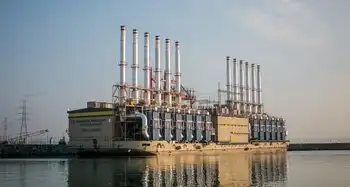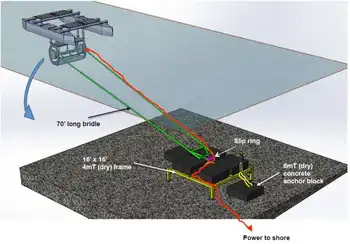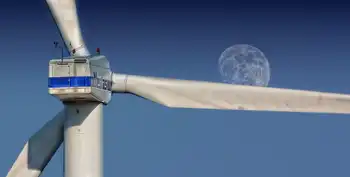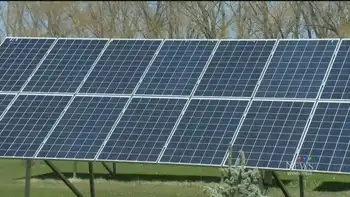Buckypaper a strong composite that conducts like copper
By Associated Press
NFPA 70e Training - Arc Flash
Our customized live online or in‑person group training can be delivered to your staff at your location.

- Live Online
- 6 hours Instructor-led
- Group Training Available
Buckypaper is 10 times lighter but potentially 500 times stronger than steel when sheets of it are stacked and pressed together to form a composite. Unlike conventional composite materials, though, it conducts electricity like copper or silicon and disperses heat like steel or brass.
"All those things are what a lot of people in nanotechnology have been working toward as sort of Holy Grails," said Wade Adams, a scientist at Rice University.
That idea — that there is great future promise for buckypaper and other derivatives of the ultra-tiny cylinders known as carbon nanotubes — has been floated for years now. However, researchers at Florida State University say they have made important progress that may soon turn hype into reality.
Buckypaper is made from tube-shaped carbon molecules 50,000 times thinner than a human hair. Due to its unique properties, it is envisioned as a wondrous new material for light, energy-efficient aircraft and automobiles, more powerful computers, improved TV screens and many other products.
So far, buckypaper can be made at only a fraction of its potential strength, in small quantities and at a high price. The Florida State researchers are developing manufacturing techniques that soon may make it competitive with the best composite materials now available.
"If this thing goes into production, this very well could be a very, very game-changing or revolutionary technology to the aerospace business," said Les Kramer, chief technologist for Lockheed Martin Missiles and Fire Control, which is helping fund the Florida State research.
The scientific discovery that led to buckypaper virtually came from outer space.
In 1985, British scientist Harry Kroto joined researchers at Rice University for an experiment to create the same conditions that exist in a star. They wanted to find out how stars, the source of all carbon in the universe, make the element that is a main building block of life.
Everything went as planned with one exception.
"There was an extra character that turned up totally unexpected," recalled Kroto, now at Florida State heading a program that encourages the study of math, science and technology in public schools. "It was a discovery out of left field."
The surprise guest was a molecule with 60 carbon atoms shaped like a soccer ball. To Kroto, it also looked like the geodesic domes promoted by Buckminster Fuller, an architect, inventor and futurist. That inspired Kroto to name the new molecule buckminsterfullerene, or "buckyballs" for short.
For their discovery of the buckyball — the third form of pure carbon to be discovered after graphite and diamonds — Kroto and his Rice colleagues, Robert Curl Jr. and Richard E. Smalley, were awarded the Nobel Prize for chemistry in 1996.
Separately, Japanese physicist Sumio Iijima developed a tube-shaped variation while doing research at Arizona State University.
Researchers at Smalley's laboratory then inadvertently found that the tubes would stick together when disbursed in a liquid suspension and filtered through a fine mesh, producing a thin film — buckypaper.
The secret of its strength is the huge surface area of each nanotube, said Ben Wang, director of Florida State's High-Performance Materials Institute.
"If you take a gram of nanotubes, just one gram, and if you unfold every tube into a graphite sheet, you can cover about two-thirds of a football field," Wang said.
Carbon nanotubes are already beginning to be used to strengthen tennis rackets and bicycles, but in small amounts. The epoxy resins used in those applications are 1 to 5 percent carbon nanotubes, which are added in the form of a fine powder. Buckypaper, which is a thin film rather than a powder, has a much higher nanotube content — about 50 percent.
One challenge is that the tubes clump together at odd angles, limiting their strength in buckypaper. Wang and his fellow researchers found a solution: Exposing the tubes to high magnetism causes most of them to line up in the same direction, increasing their collective strength.
Another problem is the tubes are so perfectly smooth it's hard to hold them together with epoxy.
Researchers are looking for ways to create some surface defects — but not too many — to improve bonding.
So far, the Florida State institute has been able to produce buckypaper with half the strength of the best existing composite material, known as IM7. Wang expects to close the gap quickly.
"By the end of next year we should have a buckypaper composite as strong as IM7, and it's 35 percent lighter," Wang said.
Buckypaper now is being made only in the laboratory, but Florida State is in the early stages of spinning out a company to make commercial buckypaper.
"These guys have actually demonstrated materials that are capable of being used on flying systems," said Adams, director of Rice's Richard E. Smalley Institute for Nanoscale Science and Technology. "Having something that you can hold in your hand is an accomplishment in nanotechnology."
It takes upward of five years to get a new structural material certified for aviation use, so Wang said he expects buckypaper's first uses will be for electromagnetic interference shielding and lightning-strike protection on aircraft.
Electrical circuits and even natural causes such as the sun or Northern Lights can interfere with radios and other electronic gear. Buckypaper provides up to four times the shielding specified in a recent Air Force contract proposal, Wang said.
Typically, conventional composite materials have a copper mesh added for lightning protection. Replacing copper with buckypaper would save weight and fuel.
Wang demonstrated this with a composite model plane and a stun gun. Zapping an unprotected part of the model caused sparks to fly. The electric jolt, though, passed harmlessly across another section shielded by a strip of buckypaper.
Other near-term uses would be as electrodes for fuel cells, super capacitors and batteries, Wang said. Next in line, buckypaper could be a more efficient and lighter replacement for graphite sheets used in laptop computers to dissipate heat, which is harmful to electronics.
The long-range goal is to build planes, automobiles and other things with buckypaper composites. The military also is looking at it for use in armor plating and stealth technology.
"Our plan is perhaps in the next 12 months we'll begin maybe to have some commercial products," Wang said. "Nanotubes obviously are no longer just lab wonders. They have real world potential. It's real."











